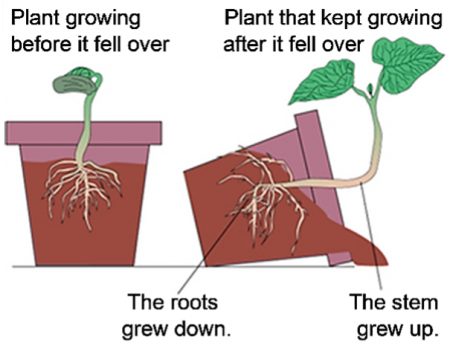Serendip is an independent site partnering with faculty at multiple colleges and universities around the world. Happy exploring!
Why do some plants grow in odd shapes?
 In this analysis and discussion activity, students investigate several examples of plants that have grown in odd shapes.
In this analysis and discussion activity, students investigate several examples of plants that have grown in odd shapes.
As students analyze these anchoring phenomena, they learn (1) how the zones of cell division and elongation contribute to the growth of stems and roots; (2) how the effects of a plant hormone on cell elongation contribute to plant responses to light and gravity; and (3) how differentiated cells (xylem cells, phloem cells and photosynthetic cells) cooperate to supply all parts of the plant with needed molecules and ions.
In this activity, students interpret data from scientific studies, develop and refine scientific models, and answer additional analysis and discussion questions.
This activity can be used in a unit on cells or as an activity on development after students learn about cell division.
The Student Handout is available in the first two attached files and as a Google doc designed for use in distance learning and online instruction. (For additional instructions, see https://serendipstudio.org/exchange/bioactivities/Googledocs, especially item 7.) The Teacher Notes are available in the third and fourth attached files. The Teacher Notes provide instructional suggestions and background information and explain how this activity is aligned with the Next Generation Science Standards.
| Attachment | Size |
|---|---|
| plant growth SH.docx | 8.13 MB |
| plant growth SH.pdf | 965.46 KB |
| plant growth TN.docx | 6.63 MB |
| plant growth TN.pdf | 1.26 MB |











Comments
Post new comment